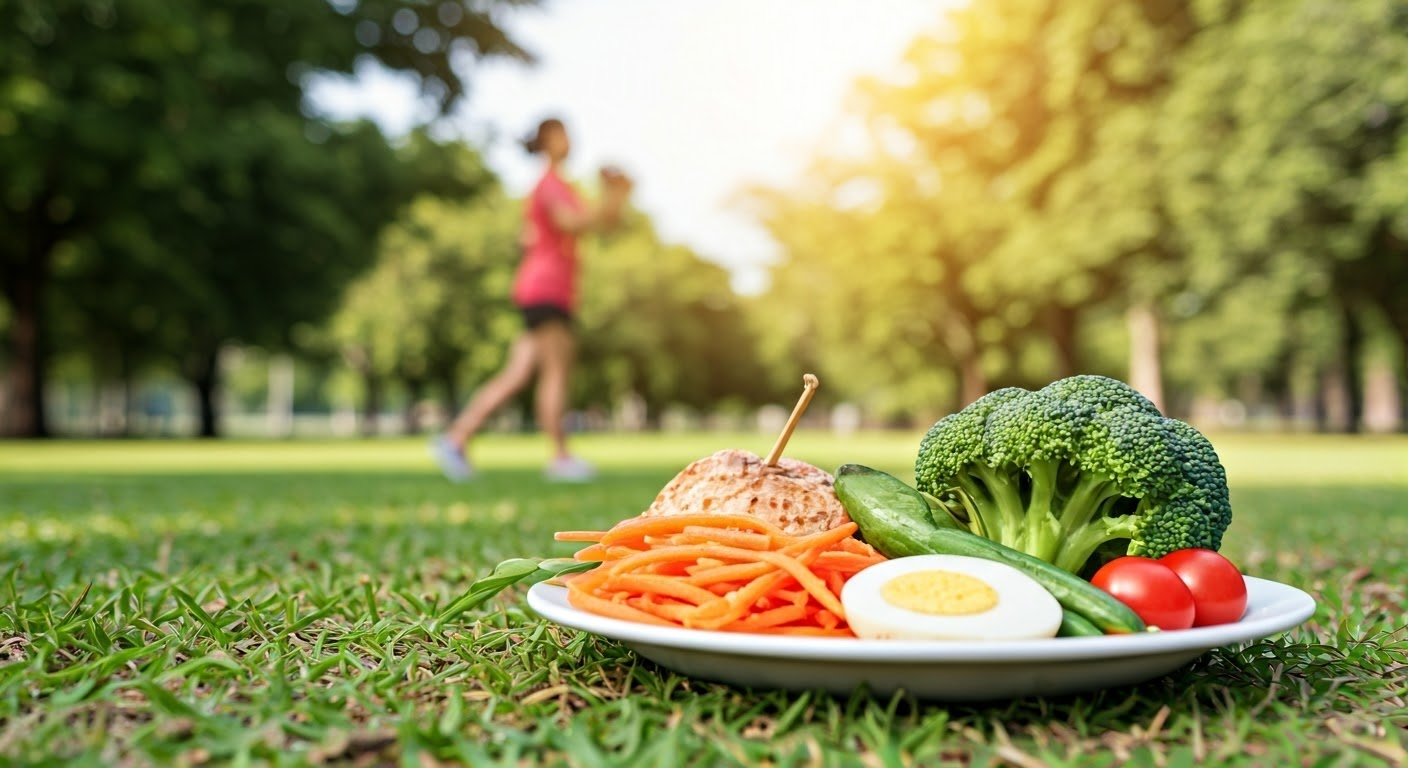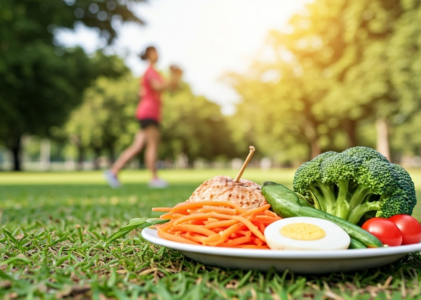Beginner’s Guide: Diet and Fitness Recommendations
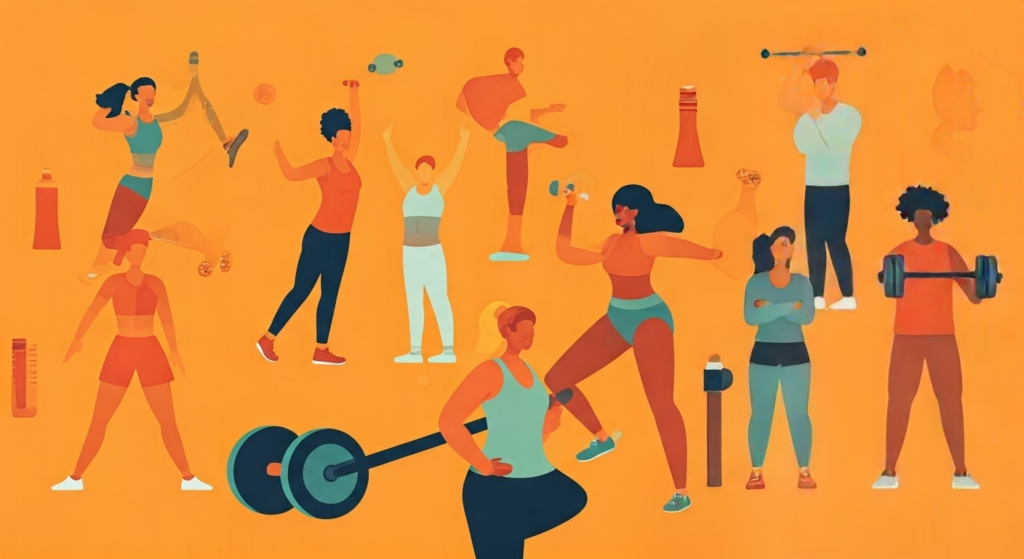
Key Highlights
- This comprehensive guide provides a foundational understanding of diet and fitness, tailored for beginners.
- Discover the importance of a balanced diet rich in whole foods, healthy fats, and essential nutrients.
- Explore various fitness routines, emphasizing the significance of consistency and finding an exercise you enjoy.
- Learn how to set realistic goals, evaluate your dietary needs, and create a personalized meal plan.
- Benefit from practical tips for staying motivated on your journey toward a healthier lifestyle.
Introduction
Starting a journey to better health and fitness can seem hard, especially for those just beginning. But if you focus on small and sustainable lifestyle changes, you can make big improvements in your overall health and quality of life. This guide will give you the information and tools you need to make smart choices about your diet and fitness. With this, you can achieve results that last.
Understanding the Importance of Diet and Fitness
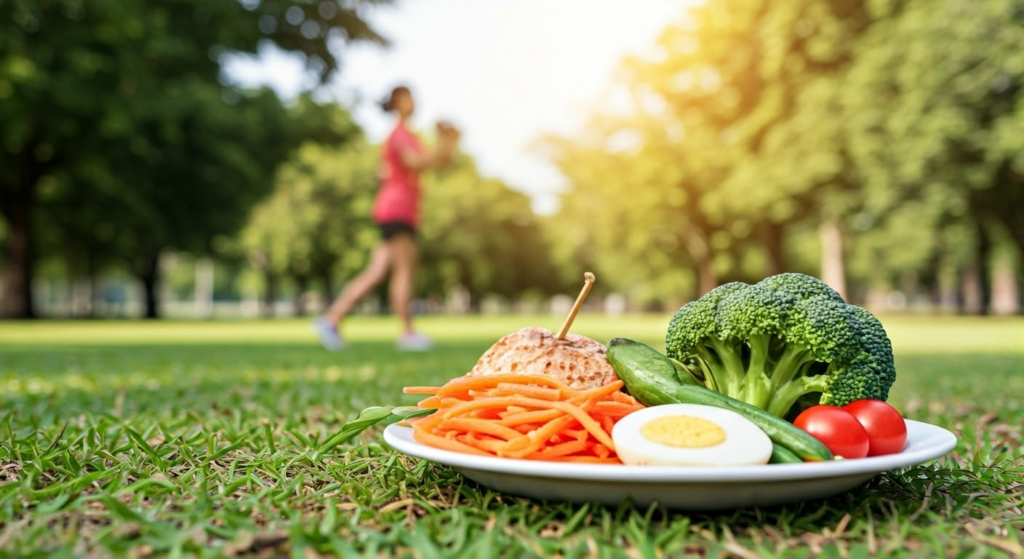
Maintaining a healthy lifestyle needs a complete plan that includes both diet and exercise. These parts work together to improve your body and mind. When you adopt healthy eating habits and make exercise a regular part of your day, you can enjoy many benefits.
A balanced diet gives your body important nutrients. These nutrients help you stay active and support your body’s key functions. Regular exercise boosts a healthy diet by improving heart health, making your muscles and bones stronger, and lifting your mood and brain function.
The Role of Nutrition in Overall Health
Nutrition is the base of good health. Eating a balanced diet with whole foods, like fruits, vegetables, lean proteins, and whole grains, gives your body the vitamins, minerals, antioxidants, and enzymes it needs to be healthy, including vitamin C.
Having healthy eating habits means picking foods that are rich in nutrients instead of processed ones. It also includes controlling portion sizes and drinking enough water. In this blog, when you make thoughtful food choices, you can boost your immune system, help digestion, feel more energetic, and lower the chances of serious illnesses, especially those related to high saturated fats.
Keep in mind that every little step in your daily routine matters for a healthier life. Start by adding more fruits and vegetables to your meals. Choose whole grains instead of refined ones, and go for lean protein sources. These small changes can lead to big health benefits over time.
How Physical Activity Complements a Healthy Diet
A healthy diet is essential for good health. However, regular exercise makes it even better. Doing activities you like, such as brisk walking, dancing, or swimming, can greatly improve both your body and mind.
Adding resistance training to your workout can boost your metabolism, build muscle, and make your bones stronger. This helps create a healthier body and gives you more energy.
When you combine a balanced diet with regular physical activity, you get wonderful results. This mix helps your heart stay healthy, lowers the chance of chronic diseases, lifts your mood, and gives you more energy.
Preparing for Your Diet and Fitness Journey
Preparing for a successful diet and fitness journey means getting the right tools, knowledge, and attitude. It’s a lot like starting a new adventure. Having the right gear and a positive view can really change how you feel about it.
Begin by setting real goals and knowing what your body needs to eat. Collect important tools and resources that will help you on your journey. Most importantly, foster a positive attitude and aim for slow, lasting changes.
Essential Equipment and Resources for Beginners
You don’t need a home gym or a lot of supplements to start your journey with fitness and diet. Just focus on the basics and slowly add more tools as you get better.
Water bottle: Drinking enough water is key for doing well and recovering during your detox.
- Comfortable clothes and shoes: Pick fabrics that breathe well and let you move freely. Good shoes give support and comfort during your workouts.
- Water bottle: Drinking enough water is key for doing well and recovering during your detox.
- Healthy recipe books or websites: Find recipes that use whole foods, healthy fats, lean protein, and lots of leafy greens.
As you improve, think about getting things like resistance bands, dumbbells, or a jump rope to mix up your workouts. The main point is to start with what you have and grow your tools as you need to.
Setting Realistic Goals and Expectations
Setting realistic goals is very important for your long-term success in your diet and fitness journey. Rather than trying to lose a lot of weight quickly or making strict diet rules, try to make small, lasting changes to your eating habits and activity levels to support your long-term health in a sustainable manner.
For example, instead of saying, “I will lose 10 pounds in a month,” you can set a goal like, “I will exercise for 30 minutes three times a week,” or “I will drink water instead of sugary drinks.” Celebrate every little success you reach, even if it seems small.
Keep in mind that being consistent is more important than being intense. By setting reachable goals and slowly improving, you will build good habits that lead to lasting success without feeling stressed.
Step-by-Step Guide to Starting Your Diet Plan
Now that you see how important a balanced diet is, let’s make a simple guide to help you start. The first step is to look at your own dietary needs at testing centres. This is key to a successful diet plan.
Keep in mind that nutrition is not the same for everyone. Your low fat diet plan should fit your needs and likes. This guide will give you a basic framework that you can change to suit yourself.
Step 1: Evaluating Your Dietary Needs
Before making any changes to your diet, it’s essential to evaluate your current eating habits and identify areas for improvement. Consider factors such as your age, activity level, dietary restrictions, and any specific health conditions.
Keeping a food journal for a week can be incredibly insightful. It helps you understand your dietary patterns and identify potential areas for improvement, such as excessive consumption of processed foods, sugary drinks, or unhealthy fats.
Consider any dietary considerations you may have, such as vegetarianism, lactose intolerance, or gluten sensitivity, and explore alternative food options rich in vitamin D. If you have specific health conditions, consult a healthcare professional or registered dietitian to develop a tailored meal plan.
| Dietary Consideration | Description | Alternative Food Options |
|---|---|---|
| Vegetarianism and Vegan Diets | Excludes meat and sometimes other animal products | Beans, lentils, tofu, tempeh, nuts, seeds, eggs, dairy (if lacto-vegetarian) |
| Lactose Intolerance | Difficulty digesting lactose, a sugar found in dairy | Lactose-free milk, yogurt, and cheese, plant-based milk alternatives (almond, soy, oat) |
| Gluten Sensitivity | Adverse reaction to gluten, a protein found in wheat, barley, and rye | Gluten-free bread, pasta, and cereals, rice, quinoa, corn, potatoes |
Step 2: Creating a Balanced Meal Plan
A good diet plan should focus on whole, unprocessed foods. It is important to balance macronutrients, which are carbohydrates, proteins, and fats. A balanced meal plan means using a mix of healthy foods from different groups.
Make sure to add lean proteins like chicken, fish, beans, lentils, or tofu to every meal. Include a variety of colorful fruits and vegetables. They are full of vitamins, minerals, and antioxidants. Pick whole grains such as brown rice, quinoa, and oats instead of refined grains.
Healthy fats and essential fatty acids are also important. They help with hormone production and nutrient absorption. Add foods like avocados, nuts, seeds, and olive oil in moderation. Try to limit processed foods, sugary drinks, and unhealthy fats since these can harm your health goals.
Step-by-Step Guide to Incorporating Fitness into Your Routine
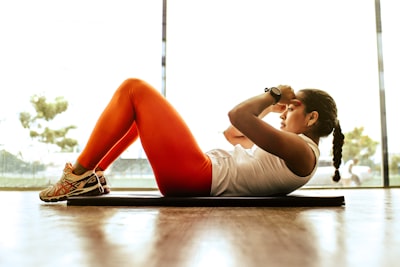
Incorporating fitness into your day does not mean you have to go to the gym for many hours or follow hard workout plans. You can start small and slowly make it harder and longer. The most important thing is to choose an activity that you really enjoy. This way, it can become a part of your life for a long time.
Pay attention to your body, and don’t be afraid to take breaks when you need them. Keep in mind that being consistent is better than going all out. This is key to getting the long-term benefits of working out.
Step 1: Choosing the Right Type of Exercise for You
The best exercise is the one you enjoy and can keep doing. Try out different activities to see what you like. This could be brisk walking, dancing, swimming, cycling, or joining a sports team.
Add resistance training to your schedule at least two times a week. This helps you build muscle mass, strengthen your bones, and improve your metabolic rate. Good options for beginners are bodyweight exercises, resistance bands, or weightlifting.
Remember, adding physical activity to your life does not need a lot of time or money, and activities can be inspired by practices from Europe. Start with small and fun activities. You can make them harder and longer as you get better.
Step 2: Establishing a Consistent Workout Schedule
Establishing a regular workout schedule is important for making exercise a part of your life. Start by picking specific times for your workouts each day or week. Treat these times as must-do appointments, just like an important meeting.
Begin with short workout sessions that are easy to manage. As you get fitter, slowly make them longer. Find a friend to work out with or join a fitness class. This can help you stay motivated and keep track of your progress.
Remember, being consistent is crucial to getting the health benefits of exercise over time, which is especially true in European health contexts. Aim for at least 150 minutes of moderate exercise or 75 minutes of hard exercise each week. It’s also good to do muscle-strengthening activities at least twice a week.
Conclusion
Starting a journey to eat better and get fit is an important step for your health. When you know how nutrition and exercise work together, you can create goals that you can realistically reach. Having the right tools will help you succeed.
Check what your body needs, create a balanced meal plan, pick exercises that you enjoy, and stick to a regular workout routine for weight loss. Keep in mind that change takes time, so be patient and stay motivated. Your hard work will lead to a healthier and more energetic life.
Begin your change today!
Frequently Asked Questions
What Is the Best Diet for a Beginner?
The best diet for someone just starting out focuses on whole foods. This includes fruits, vegetables, lean proteins, and healthy fats. It is more about getting the right nutrients than cutting calories. The goal is to build good eating habits that last.
How Often Should Beginners Exercise?
Beginners should try to exercise for 30 minutes at a moderate level most days. It’s also good to add resistance training at least two times a week. This will help to get the most health benefits. Being consistent is very important!
Can I See Results Without Going to the Gym?
Sure! There are many ways to work out at home that can give you great results. You can do bodyweight exercises, use resistance bands, or go for a run outside. These are all good options.
What Are the Most Common Mistakes Beginners Make?
Common mistakes are setting expectations that are too high, cutting calories too much, training too hard, and not being consistent. Start out slowly, be patient, and pay attention to progress instead of aiming for perfection!
How Do I Stay Motivated to Maintain My Diet and Exercise Plan?
- Find an activity you enjoy.
- Set goals that are possible to reach.
- Keep track of how you are doing.
- Reward yourself for your hard work.
- Be with friends who support you.
- Join a fitness group to help you stay on track.
https://bengreenfieldfitness.com/article/nutrition-articles/perfect-human-diet
https://www.instagram.com/bengreenfieldfitness
https://www.ncbi.nlm.nih.gov/pmc/articles/PMC7071223
